Portuguese Sweet Bread shows up at Easter with dyed eggs poking out the top. Frankly, I think it looks better without them. The mahogany crust and soft, eggy interior make a luxurious slice, turning toast or sandwiches into a special occasion.
With this easy no-knead recipephany, you can make this splendid bread on a whim. Just stir ingredients into a shaggy dough and let it sit overnight. Next day, form it into a ball, let it rise in the pan, and bake. That makes the hardest part remembering to start the night before.
While my mom didn’t bake bread, she set aside this recipe for me back in the 90s. She found it in a freebie Rhode Island magazine consisting of local ads and amateur journalism. Buried in the back was this gem of a recipe that sounded like it came straight from the old country via Little Rhody.
This recipe makes loaves that remind me of the ones my dad brought home from his favorite Portuguese bakery in East Providence. You could find sweet bread around nearly every corner because Rhode Island had, and still has, the largest percentage of residents of Portuguese ancestry of any state in the country.
Portuguese sailors and fisherman gravitated to the enormous coastline of the smallest state. They also favored Massachusetts, which has the highest number of Portuguese Americans of any state, and Hawaii, where Portuguese sweet bread became “Hawaiian bread.”
Even though it makes me all sappy about Rhode Island, this recipe may have come from Massachusetts. Thanks to its misspelling of the Portuguese word for “dough” (it should be “massa,” not “mazza”), I traced this recipe to the 1954 edition of Vineyard Fare, a fundraising cookbook compiled by the ladies of Martha’s Vineyard Hospital Auxiliary.
So it could have been handed down to grandma on the island of Martha’s Vineyard, then spread like a family cold through Rhode Island and the rest of New England. It even found its way into Yankee Magazine a few years ago, although editors felt compelled to add in unnecessary kneading.
The original Mazza Savada recipe reads as if grandma dictated it while rushing out the door. Our Recipephany version fills in a little more detail to help assure happy breadbaking.
Enjoy making this simple yet elegant bread. Just remember to start last night.*
*Okay, you want to make it now? Or later today? Mix up the dough and let it rise about 2 hours, or until it slightly collapses or flattens. Then put it in the fridge until you’re ready to make it—from a couple hours to a couple of days. Just allow a little more rising time in the pans.
Mazza Savada, Portuguese Sweet Bread
- 1 1/4 cup milk, hot
- 1 cup sugar
- ½ cup shortening
- 1 ½ teaspoons salt
- 5-6 cups all-purpose flour
- 2 ¼ teaspoons instant yeast
- 4 eggs, beaten
- ½ teaspoon lemon extract
- ½ teaspoon powdered mace
- Glaze: 1 egg lightly beaten with a tablespoon of water
- In a large bowl, stir sugar, shortening and salt into hot milk until dissolved. Cool to lukewarm.
- Add 1 cup of flour and rest of ingredients except the egg glaze. Stir until smooth. (I like using a wooden spoon or dough whisk.) Add rest of the flour, a cup at a time, and mix. Dough should be spongy, stretchy and a little sticky. Cover bowl with plastic wrap and let sit overnight. (Or, let rise 2 hours or until dough slightly collapses or flattens. Then refrigerate until you want to bake it, from 2 hours to three days.)
- Next day (or when you take it out of the refrigerator), deflate the dough, turn it out onto a lightly floured counter and divide in half. Using extra flour as needed, form each half into a ball by stretching the top of the dough and tucking in the bottom with your fingers. This makes the top smooth and taut, essential for a good rise.
- Place each ball into a greased 8”x 1 1/2” layer cake pan. Press down on dough so it reaches the sides of the pan. Cover with plastic wrap lightly dusted with flour so it won’t stick to the dough.
- Let rise until double, about 1 to 2 hours. (Refrigerated dough will take longer.) Dough should rise about an inch above the pan rim, and be light and a little springy.
- Optional: Run a knife along the pan rim to slash the dough ¼ inch deep around the circumference. This helps keep the top of the bread from breaking as it springs up in the oven.
- Brush with egg glaze. Bake at 350 degrees about 35-45 minutes. Cool before slicing.


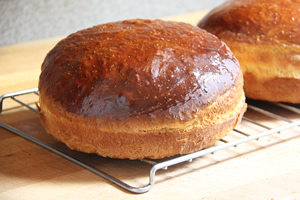


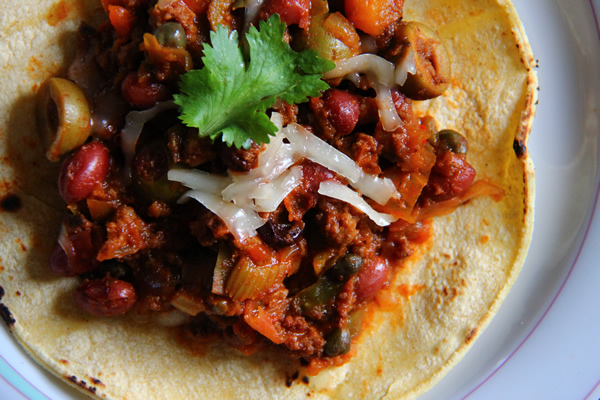
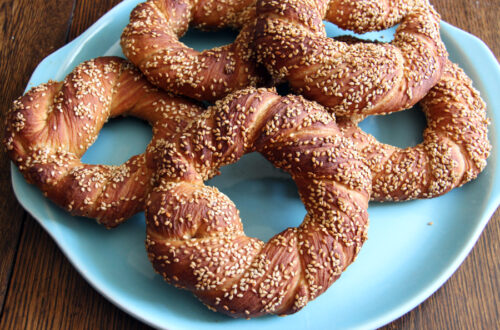
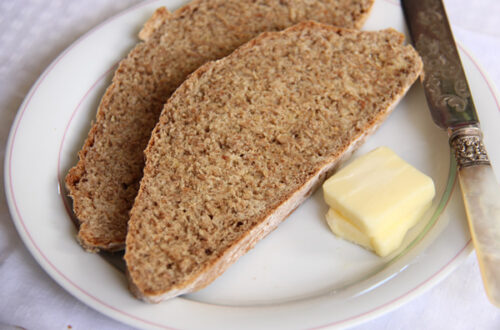
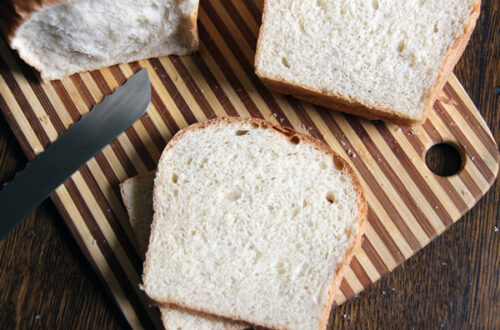
2 Comments
Erin
When do you add the yeast?
Diane Brody
Dear Erin,
Thanks for asking, sorry if it’s unclear. You add it in step 2.
Happy baking!
Thanks,
Diane